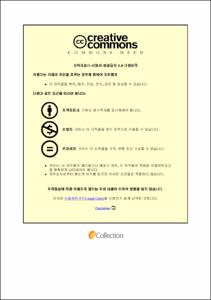한국과 몽골 아동의 기질 비교
- Abstract
- 본 연구에서는 기질의 성격심리학적 접근에서 생물학적 특성을 강조한 기질척도(STQ: Structure of Temperament Questionnaire)를 활용하여 한국과 몽골 아동의 기질을 비교 분석하였다. 연구대상은 한국과 몽골의 어린이집과 유치원에 재원 중인 만 3-5세 아동 각 210명(남아 106명, 여아 104명), 263명(남아 117명, 여아 146명)으로 이들의 기질은 각 아동의 어머니가 평정하였다. SPSS 25.0 프로그램을 활용하여 STQ의 신뢰도를 살펴보았고 인구통계학적 특성 및 각 변인에 대한 기술통계를 확인하였으며, 국가별 성에 따른 기질 차이를 알아보기 위해 t검정, 국가와 성에 따른 상호작용을 알아보기 위한 변량분석을 실시하였다. 연구결과는 다음과 같다.
첫째, 한국 아동의 기질에서는 사회적 에너지, 사회적 템포, 운동 에너지, 지적 에너지가 다른 하위요인보다 높은 경향을 보였으며, 몽골 아동의 기질은 운동 템포, 운동 에너지, 자신감이 높은 경향을 보였다. 각 국가별로 성에 따른 기질을 살펴본 결과 한국 아동에서는 운동 에너지, 운동 템포, 감각적 추구, 사회적 에너지, 확률적 민감성, 자신감, 충동성에서 남아가 여아보다 높게 나타났으며, 사회적 템포, 공감 능력, 지적 에너지, 신경증에서는 여아가 남아보다 높았다. 반면, 몽골 아동에서는 운동 에너지, 운동 템포, 감각적 추구, 공감 능력, 지적 에너지, 유연성, 확률적 민감성, 자신감, 충동성에서 남아가 여아보다 더 높았고, 사회적 에너지, 사회적 템포, 신경증에서는 여아가 남아보다 높았다. 국가별 성차를 분석한 결과 한국 아동에서만 공감 능력, 확률적 민감성, 신경증에서 성차가 유의하게 나타났다. 공감 능력과 신경증에서는 여아가 남아보다 유의하게 높았으며 확률적 민감성에서는 남아가 여아보다 유의하게 높았다.
둘째, 한국과 몽골 아동의 국가 및 성에 따른 기질의 차이검증(ANOVA) 결과 STQ 하위척도 12가지 요인 중 운동 에너지를 제외한 모든 요인에서 국가 간에 유의한 차이가 있는 것으로 나타났다. 그리고 운동 템포, 감각적 추구, 사회적 템포, 공감 능력, 확률적 민감성 및 신경증에서 유의한 성차가 있는 것으로 나타났다. 운동 템포, 사회적 템포, 공감 능력 및 신경증에서는 여아가 남아보다 유의하게 높았으며 감각적 추구, 확률적 민감성에서는 남아가 여아보다 유의하게 높았다.
또한 공감 능력, 지적 에너지 및 신경증에서는 국가와 성의 상호작용이 유의하였다. 공감 능력의 경우 한국 아동에서는 남아에 비해 여아가 유의하게 높았으나 몽골 아동에서는 성차가 유의하지 않았다. 지적 에너지의 경우도 한국 아동에서는 남아에 비해 여아가 유의하게 높았으나 몽골 아동에서는 오히려 남아가 여아보다 높은 경향을 보이며 국가와 성 간의 상호작용이 유의하였다. 끝으로 신경증의 경우 한국 아동에서는 여아가 남아보다 신경증 기질이 높은 것으로 나타났으나 몽골 아동에서는 성차가 없었다.
셋째, 각 국가별 기질의 하위요인 간 상관을 분석한 결과 아시아 두 국가 아동의 기질에서 유사성과 차이점이 나타났다. 예로 한국 아동의 경우 운동 에너지는 운동 템포, 감각적 추구, 사회적 에너지, 사회적 템포, 지적 에너지, 유연성, 자신감과 유의미한 정적 상관을 나타냈고, 몽골 아동의 경우 운동 에너지는 사회적 에너지와 사회적 템포를 제외한 모든 요인과 유의미한 정적 상관을 나타냈다.
본 연구를 통해 아시아 문화권에서 STQ 기질척도의 적용 가능성을 살펴보았다. 소수의 요인을 제외한 한국과 몽골의 아동에서 STQ로 측정한 기질 하위요인의 신뢰도는 높은 편이었다. 각 국가별로 기질의 특성과 기질 하위요인 간 상관을 살펴보았을 때 같은 아시아 문화권의 아동집단 간에서도 유사성과 차이점이 있음을 알 수 있었다. 이러한 차이를 설명할 수 있는 두 국가의 사회화과정 등에 대한 후속 연구가 필요하다.
주요어 : 한국아동, 몽골아동, 기질, STQ|In this study, the Structure of Temperature Questionnaire (STQ), which was recently introduced in Korea and emphasized physiological aspects, was used to analyze the temperament of Korean and Mongolian children. Subjects of the study were 210 Korean (106 boys, and 104 girls) and 263 Mongolian children (117 boys and 146 girls) who were enrolled in daycare centers and kindergartens. Their temperament was rated by parents. Using the SPSS 25.0 program, descriptive statistics for each variable, ANOVA for differences in terms of country and gender and correlations among subscales of temperament in each country were obtained.
Firstly, the temperament of Korean children was found to be higher in social energy, social tempo, kinetic energy, and intellectual energy than other subscales, while that of Mongolian children was found to be higher in exercise tempo, kinetic energy, and confidence than other subscales. T-tests for gender effect in each country revealed that Korean boys were rated higher in kinetic energy, exercise tempo, sensory pursuit, social energy, stochastic sensitivity, confidence and impulsivity than Korean girls, and Korean girls were rated higher in social tempo, empathy, intellectual energy, and neuroticism than boys On the other hand, Mongolian boys were rated higher in kinetic energy, kinetic tempo, sensory pursuit, empathy, intellectual energy, flexibility, stochastic sensitivity, confidence, and impulsivity than Mongolian girls. However, Mongolian girls were rated higher in social energy, social tempo, and neuroticism than Mongolian boys .
Secondly, ANOVA for temperament difference by country and gender showed that there were significant differences between two countries in all but kinetic energy in 12 subscales of STQ. Also there were significant gender differences in motor tempo, sensory pursuit, social tempo, empathy, stochastic sensitivity, and neurosis. Also, there were significant interaction effects between countries and gender in empathy, intellectual energy, and neurosis.
Thirdly, correlation analyses among subscales of temperament in each country revealed the similar trends as well as the differences in temperament. For example, Korean childern there were significant positive correlations between motor energy and motor tempo, sensory pursuit, social energy, social tempo, intellectual energy, flexibility, or confidence and in Mongolian children there were significant positive correlations between motor energy and all other subscales except social energy or social tempo.
This study revealed that STQ showed satisfactory reliabilities for Korean and Mongolian children except for a few subscales. Future studies needs to explain the socio-culutural factors that underlie in these differences between two Asian countries.
Key words: Korean children, Mongolian children, Temperament, STQ
- Issued Date
- 2021
- Awarded Date
- 2021-08
- Type
- Dissertation
- Alternative Author(s)
- Ganzorig Altanzul
- Affiliation
- 울산대학교
- Department
- 일반대학원 아동가정복지학과
- Advisor
- 박혜원
- Degree
- Master
- Publisher
- 울산대학교 일반대학원 아동가정복지학과
- Language
- kor
- Appears in Collections:
- Child family > 1. Theses (Master)
- 파일 목록
-
-
Download
 200000508470.pdf
기타 데이터 / 8.84 MB / Adobe PDF
200000508470.pdf
기타 데이터 / 8.84 MB / Adobe PDF
-
Items in Repository are protected by copyright, with all rights reserved, unless otherwise indicated.